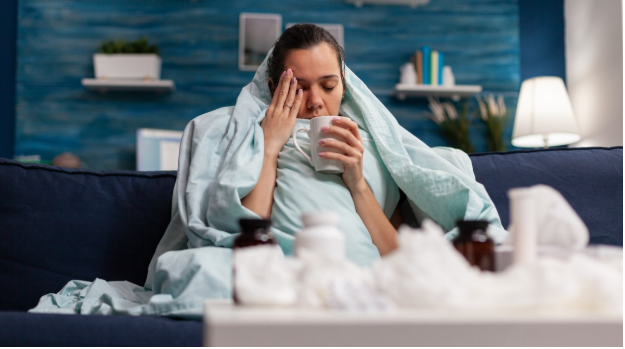Household Mold is Making You Sick: Tips for Expert Removal and Remediation
Mold is like that uninvited guest that just loves to sneak into people’s homes, while thriving in damp corners and making people feel miserable. From all the stuffy noses to stubborn coughs, mold can wreak havoc on anyone’s health, and it’s often hiding in plain sight. For anyone worried about the risks of household mold creeping into their space, here’s a friendly, expert guide to spotting it, kicking it out, and keeping it gone—all without losing your cool.
Why Mold is a Serious Health Concern
When it comes to mold, it isn’t just an eyesore; it’s a health hazard. It releases tiny spores that can irritate lungs, trigger allergies, or even cause serious issues like asthma flare-ups or infections, especially for folks with weakened immune systems. The CDC notes that mold exposure can lead to symptoms like sneezing, watery eyes, or skin rashes, and in severe cases, it’s linked to chronic respiratory problems. Common culprits like black mold (Stachybotrys chartarum) produce mycotoxins, which sound scary because they are. If someone’s feeling off and their home smells musty, mold might be the actual culprit.
Where Mold Loves to Lurk in Homes
Household mold is like that friend who crashes on your couch and never leaves—it loves warm, wet spots. Think bathrooms with poor ventilation, basements after a rainy spell, or that forgotten corner behind the fridge. Leaky pipes, high humidity (above 60%), or even a spilled water bottle left too long can roll out the welcome mat. A 2023 study from the Journal of Environmental Health found that 1 in 5 homes has some level of mold growth, often in places like under sinks, around windows, or in carpets that stayed damp too long.
Spotting Mold in Your Home
When it comes down to mold growing in your home, it doesn’t always announce itself with a big and bright neon sign. It can look fuzzy, slimy, or even powdery, in colors like black, green, or white. A musty odor is a dead giveaway, but sometimes it’s hidden behind wallpaper or inside walls. For those playing detective, a flashlight and a keen nose are key. Check out some of these high-risk zones like:
- Bathrooms (especially around tiles or grout)
- Kitchens (under sinks or near appliances)
- Basements or crawlspaces
- Areas near air conditioners or humidifiers
If mold’s suspected but not totally visible, a home mold testing kit (available for $10-$50 at hardware stores) can help you confirm its presence. For bigger concerns, a professional mold inspector might be worth the call—they use tools like moisture meters to pinpoint hidden growth.
DIY Mold Removal: Handle with Care
For small patches (less than 10 square feet), homeowners can tackle mold themselves, but safety comes first. Here’s how to do it right:
- Gear Up: Wear gloves, a mask (N95 or better), and goggles to avoid breathing spores.
- Ventilate: Open windows and use a fan to keep air moving.
- Clean Smart: Use a mix of water and detergent or a vinegar solution (1:10 ratio) to scrub mold off hard surfaces. Avoid bleach—it’s harsh and less effective than people think, per EPA guidelines.
- Dry Thoroughly: Mold loves moisture, so use a dehumidifier or fans to dry the area completely.
- Dispose Properly: Bag up any moldy materials (like rags or drywall scraps) and seal them tightly before tossing.
For porous surfaces like carpets or drywall, removal is trickier—mold often sinks deep, so replacing these materials might be necessary.
When You Need to Call in the Mold Removal Experts
If mold covers a large area, is in your HVAC systems, or it keeps coming back, then it’s time to bring in remediation experts. Professional mold remediation companies will often use advanced tools like HEPA vacuums and antimicrobial treatments to banish mold for good. Costs vary ($500-$6,000 depending on the job), but it’s a worthwhile investment for health and home value. The National Association of Mold Professionals can connect homeowners with certified experts nearby.
Keeping Mold at Bay and Away
Prevention is the real MVP. Here’s how to make a home mold-unfriendly:
- Control Humidity: Keep indoor humidity below 50% with a dehumidifier. A hygrometer ($10-$20) can monitor levels.
- Ventilate: Run exhaust fans in bathrooms and kitchens, and crack a window during humid weather.
- Fix Leaks Fast: A dripping pipe or roof leak is a mold buffet—repair it ASAP.
- Clean Regularly: Wipe down surfaces in damp areas and check appliances for leaks.
- Improve Airflow: Move furniture away from walls and avoid overstuffing closets to let air circulate.
For those in humid climates, a whole-house dehumidifier or UV air purifier can be a game-changer, though they’re pricier ($200-$1,000).
Get a Healthier Home, Free of Mold
Mold might be a super sneaky jerk, but it’s not unbeatable. By staying on top of it, acting quickly, and keeping humidity levels in check, anyone can keep their home a safe, healthy haven. If mold sensitivity symptoms like coughing or fatigue do persist, a doctor’s visit might be wise to rule out mold-related health issues. With these tips, mold doesn’t stand a chance at thriving, and homeowners everywhere can breathe easy again.
Note: For severe mold issues or health concerns, consult a professional or doctor right away. Mold’s nothing to joke about, but with the right moves, it’s totally manageable.

